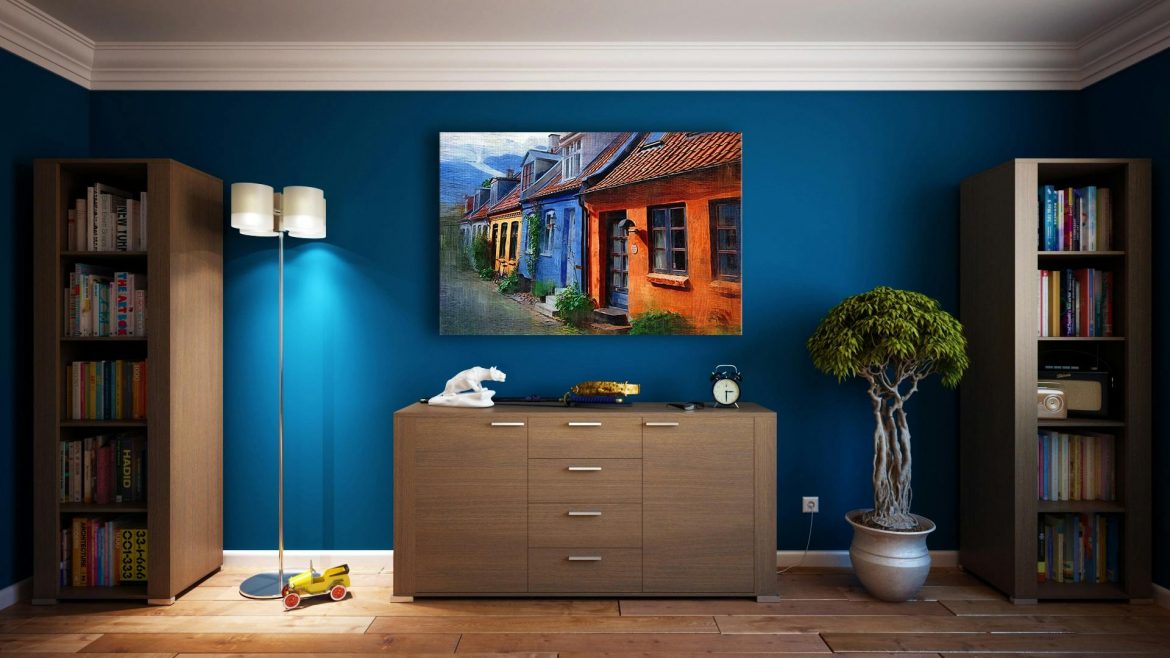Colour has a huge impact on a room. It affects the way it looks and feels. So, the colours you choose for your kitchen, living room, library, bedroom, you name it, will influence how big or small it feels, its overall aesthetic, and its mood. If you want to make your space feel more open and airy, here are 6 paint colours that should be used sparingly (or not at all in some cases) to avoid making a room feel smaller or shrunken.
1. Dark charcoal grey
According to interior designers, the general rule of thumb is that the darker the colours, the smaller your space will feel. While dark, moody colours, like dark charcoal grey, can add drama and depth to a space, they’re notorious for shrinking rooms, making them feel cramped. Darker tones absorb a lot of light, creating a heavy, enveloping atmosphere that really works better for vast spaces or open-plan spaces. Instead of a dark charcoal grey, consider a softer, warmer grey or light taupe. Medium-toned neutrals add depth and character to your space without the heaviness that dark colours are known for.
2. Olive green
Nowadays, green seems to be the new grey! It’s a wonderful colour that brings an organic, grounded quality to a space, making it more inviting and tranquil. However, too much of a good thing leads you astray. Balance is important. Too much of this shade can leave a space feeling claustrophobic. Instead, use olive green as a third colour to add pops of interest that connect the space to nature. Or, consider muted shades like sage or olive for a more soothing effect.
3. Navy blue
Similar to dark charcoal grey, navy blue is a particularly dark shade and a common culprit for shrinking open spaces. While the colour is elegant, royal, and versatile, it tends to draw the walls in and make a space feel less expansive. Consider a softer, airier shade like pale powder blue or a soft slate hue. These shades are lighter, better reflecting light in and around the room, making it feel bigger and brighter.
4. Lavender
Purple has so much versatility in art and design. Some interior designers feel that it’s a colour with a split personality, in the best way possible. Depending on the shade, hue or tone, lavender can bring a sense of calm and cosiness to a space, or dial up the drama! If you like the cosy vibes, pair this colour with soft textures and a wool rug. Or, consider a lighter shade that reflects light, or use it on one wall of the space for a pop of colour.
5. Saturated orange
Dark colours aren’t the only ones making a space feel small. According to designers, overly saturated and vibrant hues can also shrink a space, making it feel smaller and cramped, like a bold, saturated orange. It’s a wonderfully energetic and exciting colour, but in an already small space, it can feel like the walls are about to close in! Consider a softer, lighter shade of orange. Or if you’re after the warmth and vibrancy of orange, try soft apricots or warm peaches. They’ll add a touch of vibrancy without taking over the room’s agenda.
6. Heavy reds and burgundys
Reds are such a daring colour. But that is part of its charm. Heavy reds and burgundys add instant drama and warmth to a space, but easily overwhelm it too, if you’re not careful. Painting a space all red or burgundy will make it feel too intense, so you’ll need to balance it with plenty of natural light and lighter accents. Consider light-coloured furniture, bright textiles, or even sheer curtains to create interest and soften the look.
Instead of painting with these hues, consider incorporating them using accents like furniture and decor. Or choose certain archways, doors, or walls to paint, turning them into accents or focus points. If you don’t want to shrink your space, stick to lighter, more neutral tones that reflect light, and make the room feel bigger.
Also See: A fresh perspective: Spring 2025 interior design trends to refresh your home
A fresh perspective: Spring 2025 interior design trends to refresh your home

